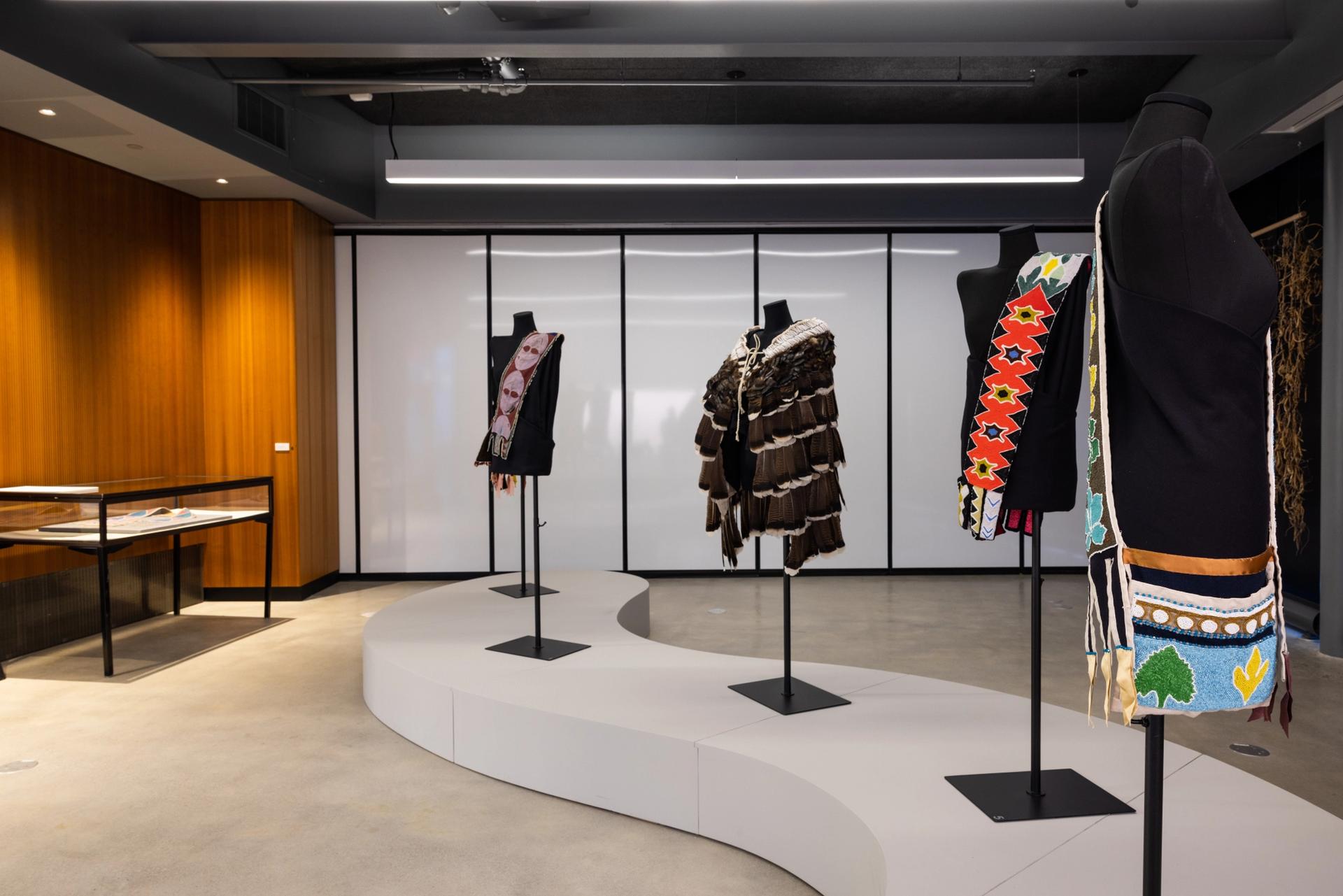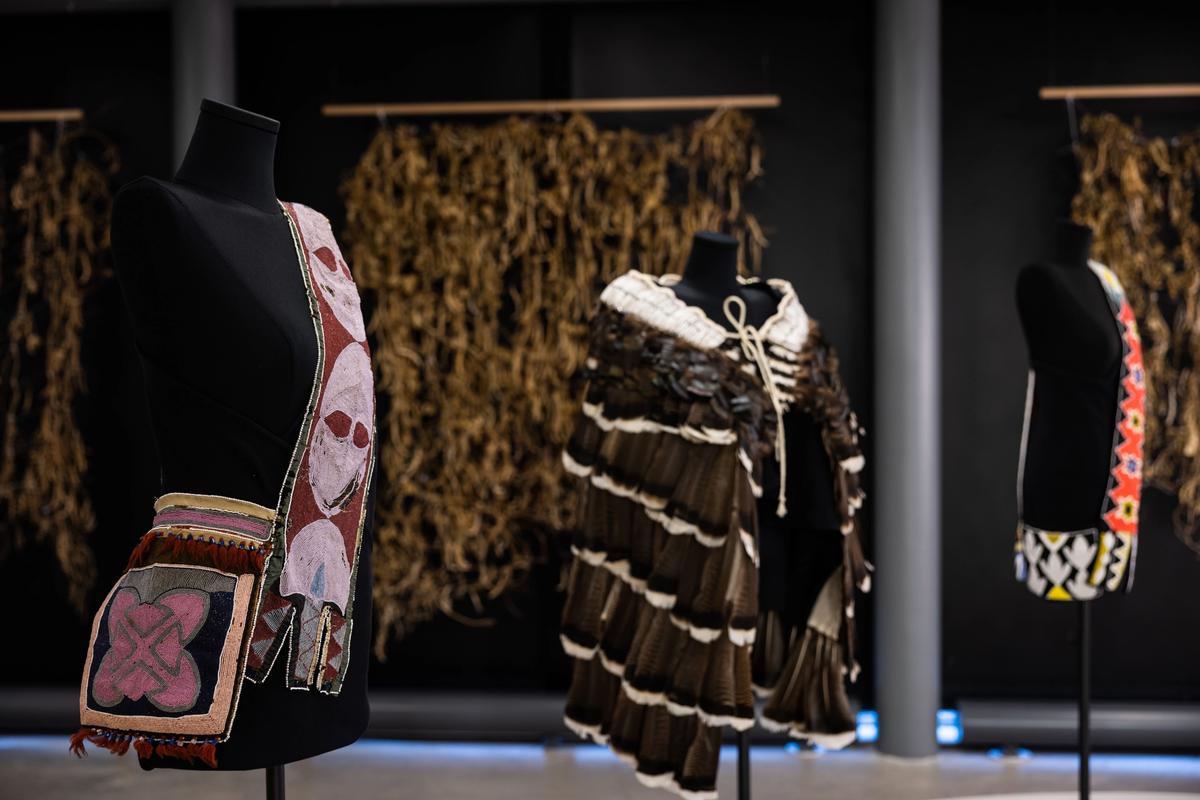The Lenape culture, which flourished in the mid-1500s in areas that became New York and various other mid-Atlantic coastal states following European colonisation, has a complex and often misunderstood history. The original stewards of Manhattan, the Lenape are said to have sold the resource-rich island to Dutch colonists in 1626, and over the next three centuries were the victims of genocide and forced relocation, with the largest population of Lenape-associated tribes now inhabiting Oklahoma.
The cultural traditions of Lenape communities have been disquietingly understudied but are highlighted in a small exhibition titled Lenapehoking at the Brooklyn Public Library branch in Greenpoint (until 30 April) that is billed as the first-ever Lenape-curated exhibition in New York. The show and its adjacent programmes, which have been organised by the Brooklyn Public Library in collaboration with the artist and curator Joe Baker—an enrolled member of the Delaware Tribe of Indians and the executive director of the Lenape Center, a non-profit organisation founded in 2009 to uplift the Lenape diaspora—aims to correct the perception of the Lenape as an extinct culture.
According to Baker, the project most importantly serves to upend hierarchical museum practices that have failed to address Lenape heritage in New York City. “Most major cities in the US have some recognition of the ancestral, original people who inhabited the place, but here in New York City there’s been almost total erasure,” he says. “Museums are just now being called upon to rethink their curatorial practice, to rethink their relationship with the communities around them and to advance dialogues and narratives, which can be challenging at times.”
The sparseness of the exhibition itself poignantly echoes the fact that the Lenape were among the Indigenous communities most afflicted by colonisation and forced removal. It features a small vitrine containing context writings, a strikingly well-preserved beaded bandolier bag from around 1850, tapestries, a bandolier bag made by Baker in 2014 containing traditional organic patterns, and a cape crafted last year from turkey feathers by the artist and poet Rebecca Haff Lowry.

Installation view of Lenapehoking Photo by Gregg Richards
The show opened on the heels of the removal of a controversial statue of former president Theodore Roosevelt that had long stood outside of the American Museum of Natural History in the Upper West Side. The removal of the equestrian monument, which shows Roosevelt on horseback flanked by an Indigenous man and a man of African descent, underscores the fact that just two monuments devoted to the Lenape exist in New York and both have been contested for being historically inaccurate.
“Both of the Lenape monuments are incorrect and racist, but the one that is the most offensive is the plaque on Inwood Hill Park, which declares itself to be the actual site for the Dutch purchase of Manhattan,” Baker says. The plaque, installed on a boulder, perpetuates “a racist mythology around the Lenape that still persists”, he adds, telling the apocryphal story that Manhattan was purchased for “trinkets and beads then worth about 60 guilders”, or around $24.
Some institutional exhibitions, like the National Museum of the American Indian’s ongoing exhibition Native New York, also present a skewed interpretation of what occurred during the fraudulent sale of Manhattan to Dutch colonists, according to Baker. “The didactic material between the Dutch West India Company and the Lenape seems to indicate that there was some kind of mutually-agreed transaction among the Dutch and the Lenape, which couldn’t be further from the truth,” he says.
He adds, “We are dealing with the fact that the first point of contact was genocide; in all my travels and discussions, that seems to be the elephant in the room that no one wants to talk about, and I think that the truth of the founding of the US needs to be aired.”
Questions related to colonisation, land rights and other topics will be addressed in a series of conversations and lectures in the coming months, including panels with Indigenous scholars and lecturers including Curtis Zunigha, Heather Bruegl and Hadrien Coumans, and a panel with the feminist activist Gloria Steinem dealing with the crisis of missing and murdered Indigenous women and two-spirit persons.
The Lenape Center is also in the process of developing an anthological website devoted to Lenape culture in order to centralise scholarship on the Lenape, such as essays on the doctrine of European conquest, the Christianisation of the Americas and research around the native trees and herbs that were cultivated pre-contact. The site will serve to “retaliate against this narrative of the wild and free Indians foraging in the woods, when there existed a sophisticated, evolved agricultural system”, Baker says.
He adds, “Through our work with the Lenape Center, we’re often asked for resources and publications and there isn’t much out there. The exhibition is just the beginning of these efforts. It’s important for people to understand that this forced removal from the Lenape homeland was not just one movement of one time period but happened over generations in New York, Pennsylvania, Delaware, western Connecticut and New Jersey then in Indiana, Missouri, Kansas and finally to Indian Territory in 1867—and by then the Lenape population numbered just 900. It’s chaotic and important to remember, and just looking at the numbers alone is very telling.”
- Lenapehoking, Brooklyn Public Library in Greenpoint, until 30 April 2022


